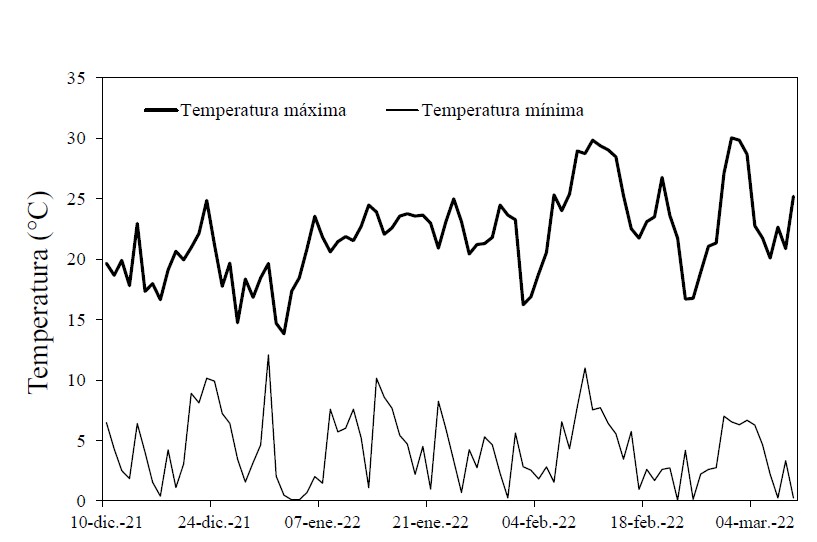Effect of mulching on cabbage grown in the Mexicali Valley
DOI:
https://doi.org/10.29312/remexca.v13i28.3275Keywords:
Brassica oleracea L, irrigation water, mineral nutrition, plasticultureAbstract
The use of mulch in soil to produce vegetables increases the yield and quality of harvested products; however, these increases are conditioned by the type of mulch, whether plastic or organic. An experiment was performed in cabbage (Brassica oleracea L. var Capitata) culture during the 2021-2022 season, with the aim of evaluating its response on water use efficiency, mineral nutrition and yield to four types of mulches in the soil. Four treatments were evaluated (soil with black plastic mulch, white plastic mulch, mulch with wheat straw and a control without mulching), distributed under a randomized block design with four repetitions. The results showed that white plastic mulch increased the total biomass, cabbage weight and leaf weight, compared to the rest of the treatments. The use of both plastic mulches (black and white) increased the concentration of nitrates in the cell extract of the midrib. The leaf temperature increased only due to the use of black plastic mulch. Finally, the efficiency in the use of water was higher in the treatments with plastic mulch and lower in the soil without mulching. Considering the greater efficiency in the use of water, yield and mineral nutrition, it was concluded that the soil with plastic mulch is the most recommended to produce cabbage in the Mexicali Valley, Mexico.
Downloads

Published
How to Cite
Issue
Section
License
Copyright (c) 2022 Revista Mexicana de Ciencias Agrícolas

This work is licensed under a Creative Commons Attribution-NonCommercial 4.0 International License.
The authors who publish in Revista Mexicana de Ciencias Agrícolas accept the following conditions:
In accordance with copyright laws, Revista Mexicana de Ciencias Agrícolas recognizes and respects the authors’ moral right and ownership of property rights which will be transferred to the journal for dissemination in open access. Invariably, all the authors have to sign a letter of transfer of property rights and of originality of the article to Instituto Nacional de Investigaciones Forestales, Agrícolas y Pecuarias (INIFAP) [National Institute of Forestry, Agricultural and Livestock Research]. The author(s) must pay a fee for the reception of articles before proceeding to editorial review.
All the texts published by Revista Mexicana de Ciencias Agrícolas —with no exception— are distributed under a Creative Commons License Attribution-NonCommercial 4.0 International (CC BY-NC 4.0), which allows third parties to use the publication as long as the work’s authorship and its first publication in this journal are mentioned.
The author(s) can enter into independent and additional contractual agreements for the nonexclusive distribution of the version of the article published in Revista Mexicana de Ciencias Agrícolas (for example include it into an institutional repository or publish it in a book) as long as it is clearly and explicitly indicated that the work was published for the first time in Revista Mexicana de Ciencias Agrícolas.
For all the above, the authors shall send the Letter-transfer of Property Rights for the first publication duly filled in and signed by the author(s). This form must be sent as a PDF file to: revista_atm@yahoo.com.mx; cienciasagricola@inifap.gob.mx; remexca2017@gmail.
This work is licensed under a Creative Commons Attribution-Noncommercial 4.0 International license.


